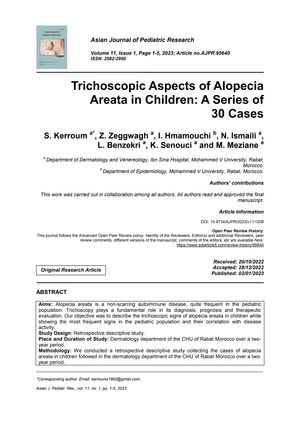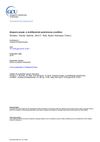Trichoscopic Aspects of Alopecia Areata in Children: A Series of 30 Cases
January 2023
in “
Asian Journal of Pediatric Research
”

TLDR Trichoscopy is crucial for diagnosing and assessing alopecia areata in children.
The study aimed to describe trichoscopic signs of alopecia areata in children and involved a retrospective descriptive analysis of cases from the Dermatology department of the CHU of Rabat, Morocco, over two years. The results showed a female predominance (63.3%) and a high incidence of anxiety (56.7%) among the patients. The majority of cases (96.7%) had been experiencing alopecia areata for more than six months, with patchy alopecia being the most common form (56.7%). Emotional shock was identified as a trigger in 60% of the children. Trichoscopic examination revealed black dots as the most frequent sign (80%), followed by yellow dots (67.7%), exclamation point hair (60%), and other specific features. The study concluded that trichoscopy is essential for diagnosing alopecia areata in children, assessing disease severity, and predicting outcomes.


